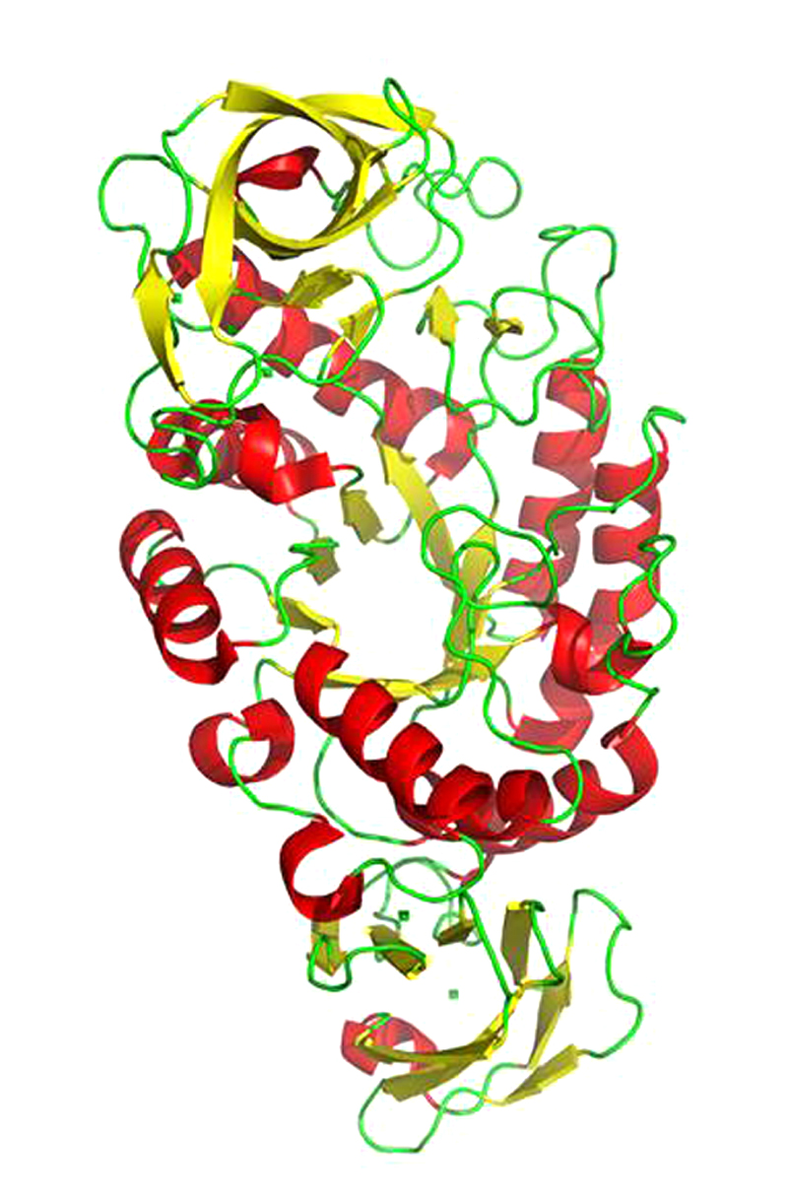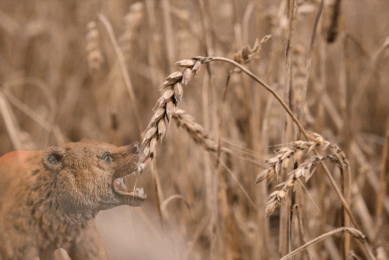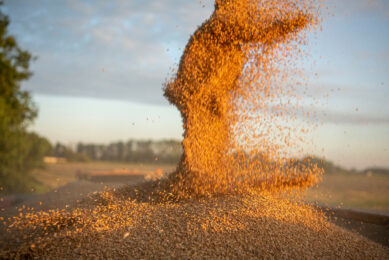Developing enzymes to deliver current and future values

Ever since the use of enzymes in animal feed gained true acceptance in the late 1980’s, the feed enzyme industry has had a major impact on animal feed formulation. This article looks back over the past 25 years, the development of enzymes, so far, and the opportunities for the decade to come.
By Dr Peter Plumstead, Senior Scientist, Danisco Animal Nutrition
In the late 1980’s, phytase was introduced to help animal producers, principally in the Netherlands, reduce the excretion of harmful indigestible phosphorus into fresh water supplies and thereby avoid a ‘phosphorus tax’. As well as avoiding legislative penalties, Dutch animal producers also enjoyed the benefits of improved absorption of phosphorus, a vital mineral for skeletal growth, and less reliance on inorganic phosphorus sources with future benefits for global sustainability. Animal producers around the world then sat up and took notice and the animal feed industry began to use feed enzymes in earnest. Around the same time, glycanases (e.g. xylanase, beta-glucanase) that cleaves the non-starch polysaccharides (NSP) in ‘viscous’ cereals (e.g. wheat, barley and triticale) were successfully added to the feed enzyme portfolio.
Early recognition of potential
The 1990’s saw the animal feed industry increasingly acknowledge the importance of enzyme use in diets containing a range of different raw materials. Products and services were introduced that were tailored to maximise performance from specific diets containing enzymes, including those containing high levels of corn. The turn of the century saw several technical innovations, including the introduction of more bio-efficient E.Coli phytases, and the launch of more thermo-stable enzyme products. The last decade has thrown up additional challenges that producers of feed enzymes have to help animal producers meet. Population growth has soared to over seven billion people and income per capita is also escalating in certain parts of the world, driving increased demand for more protein.
21st century
By 2020, estimates show that 70-75% of meat demand will come from Asia and Brazil, 75% of the demand for eggs will come from Asia while 60% of dairy demand will be from India, Pakistan and China, according to Rabobank. While the animal feed industry has become more global in its reach, local R&D and technology support need to ensure production levels will meet food security targets. The use of phytase in poultry and pig diets has also grown in response to escalating concerns over phosphorus (P) pollution from animal waste, and the economic benefits derived by replacing inorganic phosphorus sources that are a depleting resource globally. The ban on the use of meat and bone meal, a major source of P, in the EU is another factor that has accelerated the use of phytase. As a result, microbial phytase has overtaken glycanases as the primary feed enzyme type worldwide. Today, more than 70% of global poultry, pork and eggs are produced from animals fed diets containing phytase.
Application of feed enzymes today
The poultry industry is the largest user of feed enzymes today and its highly integrated nature has driven a fast uptake of feed enzyme technology over the years. There is also an increasing trend in the swine, ruminant and aquaculture industries to use feed enzymes, especially at key stages of animal development. Young pigs, with an immature digestive system, particularly benefit from feed enzyme supplementation.
The use of enzymes in ruminant diets was limited in the past because it was assumed that enzymes would not survive proteolysis in the rumen. However, a growing body of research evidence during the past decade has shown that enzyme preparations can be effective in enhancing lactation and growth performance in cattle. In the aquaculture industry the search for alternative protein sources to replace fish meal, plus concerns regarding the relatively low nutrient digestibility and the presence of an array of anti-nutritional factors in fish meal alternatives, has led to an increasing interest in feed enzymes and research into optimal applications.
Cost incentive
While the same basic issues of ‘profit, performance and planet’ are being faced by animal producers today as 30 years ago, dealing with volatility in raw material prices has been a major issue in the last few years. Today, raw materials take up more than 65% of feed production costs due to escalating crude oil prices and the impact of weather on crop yields. Feed enzyme producers have risen to these challenges, looking at how enzymes can be used to improve digestibility and performance while using less expensive, but more fibrous raw materials such as distillers dried grains with solubles (DDGS), a by-product from the bio-ethanol industry, used to replace some of the more costly feed raw materials.
Ban on AGPs
Increased production to meet growing animal protein demands has, in some countries, also coincided with new legislation around sub-therapeutic antibiotic usage (antibiotic growth promoters or AGPs). The role of a stable, resident micro-flora in the gut has long been recognised as being important to the health and performance of livestock and, until recently, the fight against some deleterious microbes was supported by the use of AGPs. However, as a result of the routine use, there was a reduced emphasis on the role that nutrition can play in establishing and directing the underlying microbiome and, at the same time, maintaining a functional, healthy gastro-intestinal tract (GIT). The use of AGPs has already been banned in the EU due to concerns about antibiotic resistance and residues in meat, and more recently in Korea, with more countries likely to follow. Achieving optimal nutrition is the biggest priority in the quest for gut health and improved immunity. The interactions between nutrition and the microbial load and balance in the GIT are complex and not fully understood, but they dictate the development, morphology and functionality of the GIT, host nutrient utilisation and, ultimately, animal performance.
Next decade
So what challenges and changes do we think the next decade will bring in terms of enzyme usage? Price volatility of raw materials will remain a big issue, and dealing with the variance in feed digestibility that arises from that volatility, plus its impact on animal productivity, will be the main challenge that animal producers and the feed industry will face. It has also been well-established that changes in levels of undigested nutrient fractions contribute to undesirable shifts in the gut microbiota, with direct consequences for digestive capacity, feed conversion, and disorders associated with poor enteric health. Consequently, an important consideration when selecting enzymes to improve diet digestibility is that the specific enzymes must target substrates, including anti-nutrients in the diet, which are not completely digested by the animal’s own (endogenous) enzymes. This will put increased emphasis on a better understanding of the consequences of feed enzyme use on the gut microbiota, given their clear link to digestive disorders and chronic and acute disease.
Reducing variability of feed value
One of the key benefits of using well-researched feed enzymes is, and will continue to be, to reduce the inherent variability in the feeding value of major feed raw materials and the resultant variability in animal performance. Feed enzyme usage improves the degree of precision in feed formulation and helps reduce costs. It is recognised that the lower the ingredient feeding value, the greater the potential for enzyme response will be. As animal producers look to more complex diets as a means of achieving better performance at less cost, they need to take into account that factors, such as cultivation methods and harvest conditions can impact not only nutrient quality of different types of grain but also substrate levels in the raw materials, thereby influencing feed enzyme response. Understanding these interactions is crucial to maximising the value that can be obtained from feed enzyme technology in the future.
Corn-based diets
Corn, for example, is the most common feed grain but its feeding value is now much better recognised as being variable (Figure 1 – see attached pdf), sometimes equally as variable as ‘viscous’ grains such as wheat. The underlying causes for this variability need to be researched and established in order to offer optimal enzyme solutions that add maximum value.
In our experience corn variability is principally a function of three main factors; – variations in inherent starch digestibility – the link between starch and protein in the grain – and subsequent harvest and drying conditions. All of these factors, and their interactions, can have an impact on the resultant metabolisable energy (ME) of the grain for the animal.
In terms of feed enzyme solutions for corn-based diets, a combination of xylanase, amylase and protease enzymes, acting on a background of existing phytase use, is the most effective way of dealing with corn ME variability. Xylanase targets the fibrous (NSP) elements in such diets, particularly important when fibrous by-products are included in diets (e.g. DDGS), while protease improves the accessibility of starch granules to amylase (both exogenous and endogenous sources). At the same time the addition of protease can also target other anti-nutritional factors in the diet e.g. residual trypsin inhibitors and lectins in soybean meal and some other vegetable proteins, as well as increasing the digestibility of the main storage proteins themselves.
Application in poultry and pigs
Poultry producers in the USA, South East Asia, and South Africa have replaced high cost corn with lower cost wheat. Ideally, those producers would assess wheat quality and nutritional value relative to maize, and apply enzymes to accelerate performance levels. However, the metabolisable energy and digestible nutrient content of wheat can potentially be far more variable than for maize.
For example, McNab (1991) found the total metabolisable energy of 72 wheat samples sourced within a single country (UK) varied by up to 8%. Also, the traditional mode of thinking has been that variable viscosity is the primary factor associated with variation in wheat feed value. However, more recent data has shown that other factors such as endosperm hardness and ash percentage were also important in wheat starch digestibility and performance of broilers (Carré and others, 2002; Pirgozliev and others, 2003).
It is also well known that phytate is not inherently well digested and that phytase application is the accepted way of positively impacting energy and amino acid digestibility. However, phytate substrate levels are frequently not considered when selecting the optimal phytase dose or assigning corresponding matrix values to the enzyme. Similarly, the energy response from ‘carbohydrase’ enzymes is really determined by five substrates; starch, NSP, sugars, protein, and fat, not “one size fits all”. For example, undigested starch and protein account for the largest amount of substrate available in corn/soy-based diets.
But this will vary for diets that are mainly wheat based. The effect of protease enzymes on amino acid digestibility are not constant, but they have been shown to be dependent on the level of each amino acid in the diet and its inherent digestibility.
The large variation in digestibility and metabolisable energy shows that it is important to take into account not only the inherent quality of feed ingredient substrates when applying enzymes but also:
- the maturity of the digestive capacity of the animal – amylases, lipases and proteases are the main enzymes of interest here most likely in combination rather than individually
- dietary factors affecting endogenous excretions
- pH in various segments of the GIT.
For example, pigs have a longer transit time than poultry and that gives them more time to extract the nutrients. Also the larger capacity of the gut means that pigs are less affected by digesta viscosity characteristics. This is the reason why pigs do not suffer from digestive inefficiencies attributed to dietary non-starch polysaccharides in wheat and barley. In poultry, the presence of a crop provides a balanced environment for some enzyme activation before the feed reaches the acidic environment of the proventriculus. Some evidence suggests that the presence of a well-developed gizzard may improve enzyme responses and give poultry an edge. Only when all these factors are taken into account, we can predict meaningful, scientifically accurate matrix values against which to measure enzyme performance levels. This is a complete change as the industry has traditionally used fixed digestibility co-efficients and generally taken a ‘black-box’ approach to determining recommended energy contributions from enzyme products.
Understanding phytate better
Our understanding phytate’s role in animal nutrition has advancing substantially over the years. The anti-nutritive effects of phytate are highly influential on dietary amino acid and energy digestibility, raising the value of phytase to the end-user beyond being just a contributor to phosphorus (and calcium) nutrition. Understanding better how the effects of varying doses of phytase interact with the effects of other exogenous enzymes being used in the diet, as well as other feed additives, will be a key focus.
New phytases, with enhanced bio-efficacy, are continually being introduced to the animal feed sector and, even after time to allow for the stringent regulatory process, will help the industry to benefit from their enhanced value.
Thermo-stability
Further development of technology in enzyme thermo-stability will give the industry more confidence in the use of steam-conditioned and pelleted feeds. These developments will come from a combination of enhanced inherent thermo-stability of the enzyme, coupled with advanced coating techniques. In this way, customers can rest assured that the claims made on enzyme products are thoroughly supported in large-scale commercial use.
Looking forward
In future, enzyme technologies will also open up opportunities for the use of less expensive and non-conventional feed raw materials. At DuPont, animal nutrition and bio-refinery businesses are collaborating to potentially upgrade raw materials from both first and second generation bio-ethanol processes for animal feed. Advances in this area could help reduce the dependency on the price volatility, and contribute to sustainable animal protein production.
References available on request











